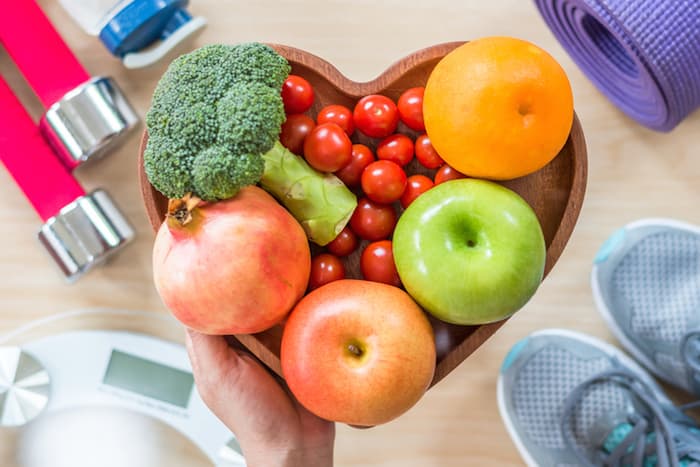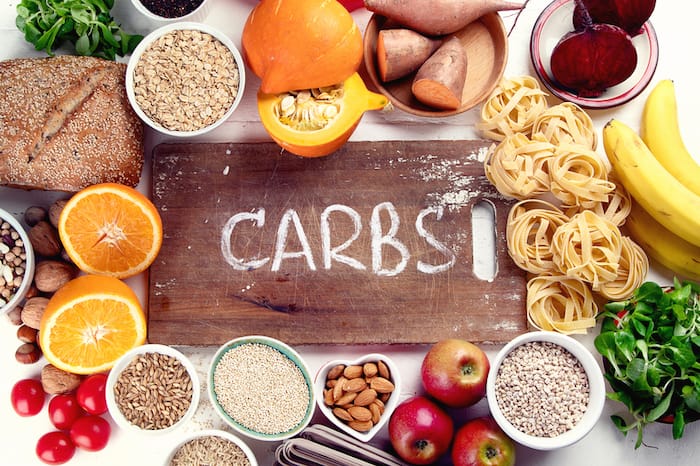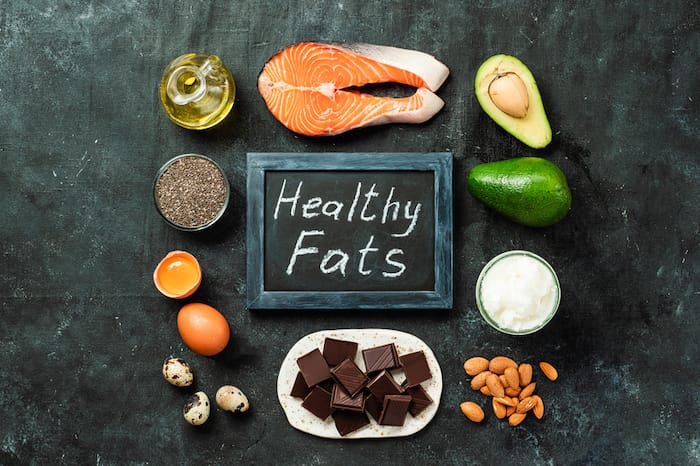- Calls to this hotline are currently being directed to Within Health or Eating Disorder Solutions
- Representatives are standing by 24/7 to help answer your questions
- All calls are confidential and HIPAA compliant
- There is no obligation or cost to call
- Eating Disorder Hope does not receive any commissions or fees dependent upon which provider you select
- Additional treatment providers are located on our directory or samhsa.gov
How Does Your Body Use Nutrients?
We take impeccable care of our cars, refueling and completing the recommended “check-ups” to make sure they run smoothly, but do we apply that same care to ourselves?
Do you think about what the fuel you eat provides your body with? Do you know what the fuel you eat does in your body?
We eat for so many reasons, to have energy, for enjoyment, celebration, sadness, and so much more. A part of this should also be so that our “machine” or body can run smoothly for a lifetime.
Macronutrients:
Macronutrients or the three major nutrients we think of are carbohydrates, fats, and proteins. These are the nutrients we visibly see as nourishment on our plates.
Each macronutrient plays a pivotal role in the body and if one is missing increased stress can be placed on the body in an attempt to compensate. In a world where we are bombarded by fad diets, it’s important to know what food actually does in our bodies and how it is used.
Carbohydrates
Carbohydrates get a bad wrap in the media and diet industry. Carbohydrates are categorized as these bad foods that should be avoided when they are the foods the human body needs the most.
Carbohydrates are the primary fuel source for the human body. We need 45-65% [2] of the foods we eat every day to come from carbohydrate foods, but why?
When we give our bodies carbohydrates our metabolism works to break down sugars into glucose to then be used to produce energy in our cells. The energy our cells produce goes on to fuel primarily our central nervous system or brain [2].
If there is leftover energy, our bodies will store it as glycogen in our liver and muscle. This will act as a backup in fasting states [2]. This backup is a survival mechanism that supports the ability to “hunt and gather” food to nourish the body in a starved state.
Carbohydrate Food Sources:
- Grains (bread, rice, pasta, etc.)
- Starchy vegetables (potatoes, corn, peas)
- Beans, legumes
- Dairy (milk, yogurt, ice cream)
- Fruit
- Sugar (table sugar, candy, dessert, etc.)
Fats
The word fat itself can have such a negative connotation, but in reality, fat is necessary for survival. We need 20-35% [1] of the food we eat daily to come from a variety of fats.
Fat in our body acts to protect vital organs, maintain temperature regulation, transport nutrients, strengthen cell membranes, and serve as energy and energy storage [2].
Fat Food Sources:
- Butter
- Oils
- Nuts, seeds
- Avocado
- Spreads (mayo, dressings, etc.)
- Fatty fish (salmon, sardines, mackerel, etc.)
Related Reading
- Food to Eat That Makes You Feel Better
- Your Metabolism at Works
- The Cues of Hunger and Satiety
- Dietitian Meal Planning
- How to Regain Weight During Recovery
- Untruths About Healthy Eating
- Understand Appetite Awareness
- Nutrition Care Process
Proteins
Proteins are the building blocks for tissues in the body to provide structure, growth, and strength. The tissues protein provides structure to include organs, muscles, tendons, ligaments, hair, skin, and more. Protein should constitute about 10-35% [2] of the food we eat daily.
Proteins also make up enzymes that regulate metabolism, promote immune function and are involved in additional metabolic, transport, and hormone systems [2].
Protein Food Sources:
- Meat (beef, pork, chicken, fish, etc.)
- Eggs
- Dairy (cheese, yogurt, milk)
- Tofu
- Nuts, seeds
- Beans, legumes
- Grains (quinoa, bulgur, etc.)
Micronutrients:
Micronutrients, otherwise known as vitamins and minerals, are small players in our bodies that support the major work of Macronutrients. Remember if one link is missing or lacking the body cannot optimally function.
Similar to the need for variety when incorporating macronutrients, try to explore if variety with micronutrients or vitamins and minerals are missing and how you can incorporate more color and flavor into meals and snacks.
When malnourished, deficiency of some vitamins and minerals is more common than others. To determine deficiency, visit your Primary Care Provider to complete lab work.
If you find yourself deficient in a vitamin or mineral make sure to speak with your Primary Care Provider or a Registered Dietitian for support in adding to your meals and snacks and supplemental options.
Vitamin D
Vitamin D is a fat-soluble vitamin. Fat-soluble vitamins need fat to be properly absorbed and used in the body. If we do not have enough fat in our meals and snacks or on our bodies, we can become deficient in these nutrients.
The deficiency of fat-soluble vitamins is common in malnourished states. Remember to not only prioritize these foods but also practice adding a variety of fats when cooking and eating including olive oil, butter, avocado, etc.
Vitamin D aids in the proper absorption of calcium to support strong bones and teeth [2]. As human beings, we get most of our vitamin D from sun exposure, but there are a limited number of naturally occurring foods we can incorporate as well as fortified foods.
Vitamin D Food Sources:
- Fatty fish
- Mushrooms
- Egg yolks
- Liver and fish liver oils
- Fortified foods (cereal, milk, etc.)
Vitamin A
Vitamin A is another important fat-soluble vitamin. Vitamin A supports healthy vision, skin, mucous membranes, bones, teeth, and a strong immune system [2].
Vitamin A Food Sources:
- Milk
- Eggs
- Plant foods (beta-carotene) – carrots, sweet potato, apricots, cantaloupe, tomatoes, dark leafy green vegetables
Vitamin B12
Vitamin B12 is a water-soluble vitamin. Water-soluble vitamins do not need fat to be absorbed and the body can easily flush out too much of these vitamins. Regardless, it is always recommended to speak with a medical professional prior to implementing a supplement.
Vitamin B12 supports the proper growth and development of the nervous system. It also plays a role in metabolism and the efficient utilization of macronutrients for energy [2].
Vitamin B12 Food Sources:
- Meat (beef, pork, chicken, fish, etc.)
- Nutritional yeast
- Fortified foods (plant-based milk, etc.)
Calcium
Calcium is a mineral that supports strong and healthy bones and teeth. Also, calcium plays a role in nervous system function, muscle function, and blood clotting [2].
Remember vitamin D helps in the absorption of calcium. When checking labs, if Vitamin D is low this may be impacting the absorption of calcium and ultimately your bones and teeth. If we cannot absorb calcium from the bloodstream, it will be pulled from storage or bones [1].
Calcium Food Sources:
- Dairy (milk, yogurt, cheese)
- Tofu
- Fortified foods (cereal, orange juice, etc.)
- Small fish with bones
- Broccoli, dark leafy greens
Iron
Iron is a mineral that supports the transport of oxygen from the lungs via red blood cells to all parts of tissues within the body [2]. Anemia is the result of iron deficiency leading to fatigue, brain fog, etc.
Iron Food Sources:
- Red meat
- Egg yolks
- Dark green leafy vegetables
To make sure your body is properly absorbing Iron you can add a source of vitamin C [1] such as citrus, tomatoes, strawberries, etc. to a meal or snack.
Zinc
Zinc is a mineral the receives attention for its role in supporting our immune system, but it also plays a role in reproduction and the nervous system [2].
Zinc Food Sources:
- Oysters, crab, lobster
- Meat (beef, pork, chicken, etc.)
- Beans, legumes
- Nuts, seed
- Whole grains
- Fortified foods (cereal, dairy products, etc.)
Resources:
[1] helpguidewp. (2021, July 15). Vitamins and Minerals. HelpGuide.Org. Retrieved November 22, 2021, from https://www.helpguide.org/harvard/vitamins-and-minerals.htm [2] Nutrition Basics. (n.d.). Washington State University. Retrieved November 17, 2021, from https://mynutrition.wsu.edu/nutrition-basics
Author: Raylene Hungate, RDN, LD/N
Page Reviewed & Approved By: Jacquelyn Ekern, MS, LPC 2.8.22







